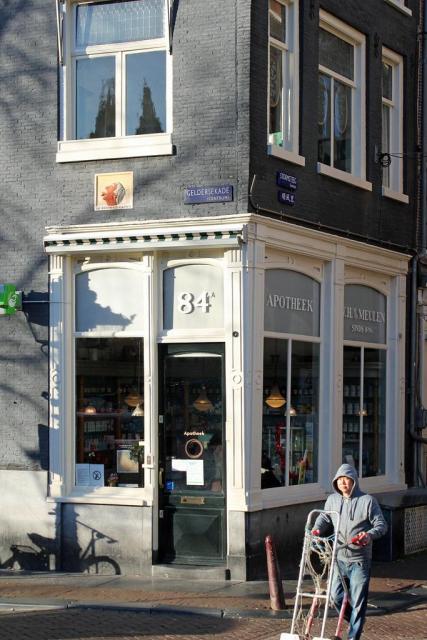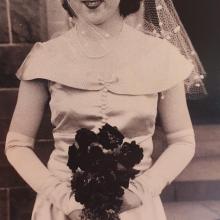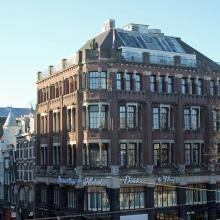Taking a walk from Shipping House (Het Scheepvaarthuis) at Prins Hendrikkade, to Oude Kerk, you pass the Bantammerbrug, where you find the pharmacy Van der Meulen, in use as a pharmacy since 1696.
The wall above the pharmacy has a facing brick with a 'yawner', which can sometimes still be seen above historical pharmacies in the Netherlands.
<a href="https://old.gwulo.com/%3Ca%20href%3D"https://en.wikipedia.org/wiki/Gaper">https://en.wikipedia.org/wiki/Gaper" rel="noreferrer nofollow">en.wikipedia.org/wiki/Gaper</a>
If you understand Dutch, more information about the Van der Meulen pharmacy can be found at Els van Wageningen's site about historical Amsterdam stores <a href="https://old.gwulo.com/%3Ca%20href%3D"https://www.winkelstories.com/Meulen01.html">https://www.winkelstories.com/Meulen01.html" rel="noreferrer nofollow">www.winkelstories.com/Meulen01.html</a>
Corresponding with Charles Gesner van der Voort's (1916-1991) son Peter, he wrote me about his father's hobby after retirement: researching the family ancestry. The Gesner van der Voort family has Amsterdam roots, going back to Aert or Arent van der Voort, deceased in Amsterdam in 1565. Ca. 1695, a Swiss family named Gesner moved to Amsterdam and through marriage, the two families were united. To preserve the Gesner name, it was added to the Van der Voort family name. Amsterdam still being a relatively small city by 1696, it is possible, the Gesner van der Voort's took their prescriptions from this pharmacy!
This route crosses the historical Chinatown of Amsterdam, where the first Chinese settlers arrived around 1900. Dutch author Karina Meeuwse described their history in "Oostenwind", published in 2000 at the 100th anniversary of Chinese settlers in the Netherlands. I read the excellent 2010 reissue and found out these first settlers were employed by shipping companies.
Many years later, one of the later settlers, originating from Hong Kong, lived in my home town just outside of Amsterdam. He was one of the business men who built "Sea Palace", a floating Chinese restaurant at Prins Hendrikkade in Amsterdam which is still in business today. At an early age, I used to clean his luxury automobiles and was mystified by the Chinese family customs and language, but that's another story!
If you zoom in, you see the street sign "Stormsteeg" accompanied by a street sign in Chinese. It indicates this street is part of Chinatown. The following website explains:
<a href="https://old.gwulo.com/%3Ca%20href%3D"https://www.amsterdamoudestad.nl/bezienswaardigheden/bezienswaardigheden-oude-binnenstad/chinatown/straatnamen-chinatown">https://www.amsterdamoudestad.nl/bezienswaardigheden/bezienswaardigheden..." rel="noreferrer nofollow">www.amsterdamoudestad.nl/bezienswaardigheden/bezienswaard...</a>
"Geldersekade is Kiu Tak Si Kai which means place where Chinese together with others strive for the common good. The Chinese name for Stormsteeg sounds like the beginning of a poem; Shun Fung Lee, alley of the accommodating wind which brings prosperity and success."
photo by Pieter Lommerse




